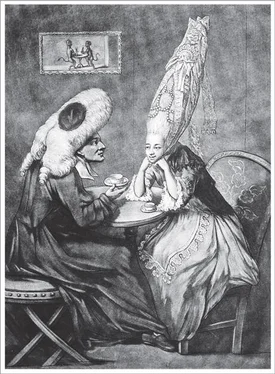Bill Bryson - At Home
Здесь есть возможность читать онлайн «Bill Bryson - At Home» весь текст электронной книги совершенно бесплатно (целиком полную версию без сокращений). В некоторых случаях можно слушать аудио, скачать через торрент в формате fb2 и присутствует краткое содержание. Жанр: Старинная литература, на английском языке. Описание произведения, (предисловие) а так же отзывы посетителей доступны на портале библиотеки ЛибКат.
- Название:At Home
- Автор:
- Жанр:
- Год:неизвестен
- ISBN:нет данных
- Рейтинг книги:4 / 5. Голосов: 1
-
Избранное:Добавить в избранное
- Отзывы:
-
Ваша оценка:
- 80
- 1
- 2
- 3
- 4
- 5
At Home: краткое содержание, описание и аннотация
Предлагаем к чтению аннотацию, описание, краткое содержание или предисловие (зависит от того, что написал сам автор книги «At Home»). Если вы не нашли необходимую информацию о книге — напишите в комментариях, мы постараемся отыскать её.
At Home — читать онлайн бесплатно полную книгу (весь текст) целиком
Ниже представлен текст книги, разбитый по страницам. Система сохранения места последней прочитанной страницы, позволяет с удобством читать онлайн бесплатно книгу «At Home», без необходимости каждый раз заново искать на чём Вы остановились. Поставьте закладку, и сможете в любой момент перейти на страницу, на которой закончили чтение.
Интервал:
Закладка:
For a lucky few women, there was at least some promise of greater safety with the arrival of obstetrical forceps, which allowed babies to be repositioned mechanically. Unfortunately their inventor, Peter Chamberlen, chose not to share his invention with the world, but kept it secret for the sake of his own practice, and his heirs maintained this lamentable tradition for a hundred years more until forceps were independently devised by others. In the meantime, untold thousands of women died in unnecessary agony. Forceps were not without risks of their own, it must be said. Unsterilized and clearly invasive, they could easily damage both baby and mother if not wielded with the utmost delicacy. For this reason, many medical men were reluctant to deploy them. In the most celebrated case, Princess Charlotte, heir presumptive to the British throne, died giving birth to her first child in 1817 because the presiding physician, Sir Richard Croft, would not allow his colleagues to use forceps to try to relieve her suffering. In consequence, after more than fifty hours of exhausting and unproductive contractions, both baby and mother died. Charlotte’s death changed the course of British history. Had she lived, there would have been no Queen Victoria and thus no Victorian period. The nation was shocked and unforgiving. Stunned and despondent at finding himself the most despised man in Britain, Croft retired to his chambers and put a bullet through his head.
For most human beings, children and adults both, the dominant consideration in life until modern times was purely, unrelievedly economic. In poorer households—and that is what most homes were, of course—every person was, from the earliest possible moment, a unit of production. John Locke, in a paper for the Board of Trade in 1697, suggested that the children of the poor should be put to work from the age of three, and no one thought that unrealistic or unkind. The Little Boy Blue of the nursery rhyme—the one who failed to keep the sheep from the meadow and the cows from the corn—is unlikely to have been more than about four years old; older hands were needed for more robust work.
In the worst circumstances, children were sometimes given the most backbreaking of jobs. Those as young as six, of both sexes, were put to work in mines, where their small frames allowed them access to tight spaces. Because of the heat and to save their clothes, they often worked naked. (Grown men also traditionally worked naked; women usually worked naked to the waist.) For much of the year, those who worked in mines never saw sunlight, which left many stunted and weak from vitamin D deficiencies. Even comparatively light labor was often dangerous. Children in the ceramics factories of the Potteries in the Midlands cleaned out pots containing residues of lead and arsenic, inducing a slow poisoning that condemned many to eventual paralysis, palsies, and seizures.
The least envied child workers of all were the chimney sweeps, or “climbing boys,” as they were also known. They started earlier, worked harder, and died sooner than any other group. Most began their short careers at about the age of five, though the records show one boy articled into the profession at three and a half, an age at which even the simplest tasks must have been confusing and frightening. Little boys were needed because flues were tight and often wildly convoluted. “Some,” writes John Waller in The Real Oliver Twist , “turned at right angles, ran horizontally or diagonally, even zig-zagged or plunged downward before rising up toward the stack. One London chimney switched direction an amazing fourteen times.” It was brutal work. One method of encouraging the boys not to slack was to light a pile of straw in the grate to send a blast of heat up the chimney after them. Many climbing boys ended their short careers stooped and ruined by the age of eleven or twelve. Cancer of the scrotum seems to have been a particular occupational hazard.
In such a harsh and hopeless world, the case of Isaac Ware stands out as a happy miracle. Ware’s is a name that crops up regularly in architectural histories of the eighteenth century, for he was the leading building critic of the age and his opinions carried a great deal of weight. (It was he, you may remember from our visit to the cellar, who helped make red brick unfashionable in the mid-eighteenth century by pronouncing it “fiery and disagreeable to the eye.”) But Ware was not born to a life of eminence. He started, in fact, as a street urchin and chimney sweep, and owed his polish and success to a single extraordinary act of kindness. In about 1712, an anonymous gentleman—never formally identified but more or less universally assumed to be the third Earl of Burlington, the builder of Chiswick House and one of the tastemakers of the age—was walking up Whitehall in London when he spotted a young sweep making a sketch of the Banqueting House on the pavement with a piece of charcoal. The drawing showed such extraordinary talent that Burlington tried to examine it, but the boy, thinking he was in trouble, burst into tears and made to rub it out. The gentleman calmed him, engaged him in conversation, and became so impressed with the boy’s natural brightness that he purchased the boy’s freedom from his employer, took him into his own household, and began the long process of turning him into a gentleman. He sent him on a grand tour of Europe and had him trained in all the refinements of life.
Under this tutelage Ware became an accomplished if not brilliant architect, but his real gift was as an arbiter and thinker. His several important books included a respected translation of Palladio’s Quattro libri , and The Complete Body of Architecture , which became a kind of bible of taste and discernment for professionals and amateurs both. Yet he never entirely shed his humble origins. When he died in 1766, his skin, it was said, still bore the indelible sooty stains of the chimney sweep.
Ware was, needless to say, an exception. Most children were wholly at the mercy of their employers and were sometimes treated in the most shocking manner. In one briefly notorious case, a farmer at Malmesbury, Wiltshire, hit on the idea of castrating two of his young apprentices and selling them to an opera company as singers. He was thwarted in the second part of his ambition, but unfortunately not before he had successfully snipped his way to the first.
Until well into the nineteenth century children received almost nothing in the way of legal protection. Before 1814, no law forbade the theft of a child, for instance. In Middlesex in 1802, a woman named Elizabeth Salmon, after abducting a child named Elizabeth Impey, was charged with stealing the child’s cap and gown because that was the only part of the offense that was illegal. Because abduction carried so little risk, it was widely believed that Gypsies stole children and sold them on, and there appears to have been some truth in that. A celebrated case was that of a Mary Davis, a woman of good background who in 1812, by chance, found her lost son sweeping a chimney at the inn where she was staying.
The Industrial Revolution only made matters worse, at least at first. Before the 1844 Factory Act reduced the workday for children, most worked twelve- to fourteen-hour days, six days a week. Some worked even longer, particularly during busy periods when it was necessary to meet large orders. Apprentices at one mill in 1810 were discovered to be at their machines from 5:50 a.m. till after 9:00 p.m., with a single meal break of thirty to forty-five minutes for dinner, and that was sometimes taken while standing at machines. Diet almost everywhere was often barely adequate to sustain life. “They have Water Porridge for Breakfast and Supper, and generally Oatcake and Treacle, or Oatcake and poor Broth, for Dinner,” an inspector reported. In some factories, discomfort was both chronic and considerable. Some materials, like flax, had to be kept moist as they were being worked, so some of the workers were permanently drenched by spray off the machines. In winter it must have been unbearable. Nearly all industrial machinery was really dangerous, but especially when those working around it were starved and exhausted. Some children reportedly were so tired that they hadn’t the energy to eat and sometimes fell asleep with food in their mouths.
Читать дальшеИнтервал:
Закладка:
Похожие книги на «At Home»
Представляем Вашему вниманию похожие книги на «At Home» списком для выбора. Мы отобрали схожую по названию и смыслу литературу в надежде предоставить читателям больше вариантов отыскать новые, интересные, ещё непрочитанные произведения.
Обсуждение, отзывы о книге «At Home» и просто собственные мнения читателей. Оставьте ваши комментарии, напишите, что Вы думаете о произведении, его смысле или главных героях. Укажите что конкретно понравилось, а что нет, и почему Вы так считаете.












